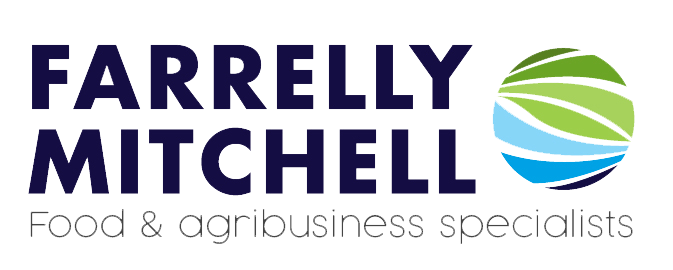With a global population projected to reach approximately 10 billion by 2050, ensuring food security will require innovative farming systems on a global scale. In the past two decades, vertical farming systems have emerged as a disruptive force in agriculture, promising to revolutionise food production and overcome food security and sustainability challenges, particularly in regions with challenging environments.
Vertical farming involves cultivating crops in vertically stacked layers, often within controlled environments such as warehouses or urban facilities. By utilising technologies such as hydroponics, aeroponics, and LED lighting, vertical farms can produce high yields in a fraction of the space required by traditional agriculture, while using fewer resources such as water, nutrients, and pesticides.
Currently valued at $6.22 billion, the vertical farming market is rapidly evolving and projected to be worth more than 6 times its current value within the next 8 years at a 26.4% compound annual growth rate (CAGR). This promising growth is driven by technological advancement, increasing urbanisation, declining arable land and labour availability, and growing consumer demand for locally grown, pesticide-free produce.
The ability to artificially optimise conditions to grow crops in an indoor environment all year round regardless of seasonal changes, with minimal of space, water and nutrients makes vertical faming an attractive option for environmentally conscious consumers and investors. For example, in 2020, vertical farming startups in Europe attracted half a billion dollars in venture capital investment, the most ever in a single year.
Recently, there have been indications of distress with the vertical farms asset class globally for a myriad of reasons. Although, the potential for vertical farming systems to play a significant role in ensuring food security remains, investors must carefully navigate the challenges of the vertical farming landscape in order to position themselves for long-term success.
Challenges in the vertical farming market
The vertical farming market currently faces several challenges hindering profitability and diminishing widespread investor and public enthusiasm. The most pressing ones limiting growth include high CAPEX and growing operational costs, technological complexity, limited crop varieties, and public scepticism.
High CAPEX and operational costs: High initial investment costs for infrastructure, technology, and energy present significant challenges to companies looking to enter the vertical farming market. One estimate reported an initial investment cost of approximately $11 million per acre to set up a high-tech vertical farm compared to approximately $6 million estimated for a high-tech greenhouse of a similar size.
Additionally, operational costs can be substantial, including expenses for lighting, heating, and specialised equipment maintenance. The European Commission estimates that vertical farms spend approximately 60% of their revenue on electricity costs, making only less than 30% of these businesses profitable. With rising energy costs, many vertical farming companies are facing bankruptcy. However, newer more efficient and renewable energy systems are emerging, offering the possibility to potentially lower operating costs and drive profitability.
Technological complexity: Vertical farming systems rely on sophisticated technology and expertise to manage and optimise growing conditions effectively. From monitoring environmental parameters to troubleshooting equipment malfunctions, operators must possess a deep understanding of specialised skills such as agricultural science, engineering, and computer technology. Finding and paying professionals with these skills can be challenging and expensive. Nevertheless, advances in areas such as automation, robotics, and system control, may help lower costs associated with technological complexity of vertical farms.
Limited crop range: While vertical farming systems offer the highest yield per surface area of growing space compared to greenhouses and traditional outdoor farming, crops that can be grown by this method are still restricted to herbs and leafy vegetables, limiting scalability and its contribution to mainstream agriculture. Expanding the range of crops that can be grown by vertical farming will require intensified research and development efforts to overcome technical challenges. There are currently efforts to use vertical farms to grow more crops such as chillies, tomatoes, and strawberries.
Public scepticism: Public acceptance of vertical farming is hindered by scepticism regarding its environmental impact and cost-effectiveness. Promoting benefits, such as reduced water usage and localised food production with successful case studies and implementing transparent labelling can enhance trust and foster wider adoption of vertical farming and consumer acceptance of vertical farm-grown produce.
Key considerations for investors
Despite headwinds currently facing the vertical farming market, some investors are not deterred, betting on increasing demand for sustainable food production solutions and technological advancements to improve efficiency, consumer acceptability, and profitability over time. For example, Intelligent Growth Solutions (IGS), a vertical farm technology provider recently announced a £22.5 million ($28.8 million) investor funding to support their global expansion. To be better positioned for long-term success in the vertical farming market, investors may consider the following:
- Diversify investment: To mitigate risks, investors can diversify their investments across different types of crops, technologies, and geographical locations. For example, an investor might allocate funds to companies specialising in leafy greens, while also investing in those focusing on vine crops or herbs. Additionally, they may diversify by investing in both established vertical farming companies and startups pioneering new technologies.
- Finance strategically: Strategic financing options such as sale-leaseback can help investors optimise capital allocation while maintaining liquidity. Under a sale-leaseback arrangement, the property and equipment of a vertical farm operation may be purchased and then leased back to the original investor. This allows the operator to unlock capital tied up in assets while providing the investor with a steady stream of lease payments. The vertical farming company, AeroFarm recently announced a sale-leaseback agreement with real-estate development company, MDH Partners.
- Consider locational advantages: Investors can leverage locational advantages by investing in vertical farming systems situated in areas with favourable conditions for agriculture or where input and operational costs are relatively lower. For example, there is increasing interest in vertical farming in the Middle East due to relatively cheaper energy and government interest in boosting food securing through localised supply chain.
- Adopt a sustainability-led approach: Sustainability is an important driver of vertical farming market growth. To align environmental and financial goals, investors can prioritise companies that adopt sustainable practices such as energy-efficient lighting, water recycling systems, and organic growing methods. Examples of such practices is highlighted in the plan for a 900,000ft2 vertical farm to be built in Dubai by ReFarm.
- Play the long game: Vertical farming is a nascent market with significant growth potential over the long term. Investors who adopt a patient, long-term perspective can capitalise on this potential. Rather than focusing solely on short-term gains, they can invest in companies with robust business models, innovative technologies, and a clear path to scalability.
Conclusion
The challenges facing the vertical farming market are significant but not insurmountable. Investors can navigate these hurdles with strategic approaches. Diversification across crops and technologies, strategic financing options, leveraging locational advantages, adopting sustainability practices, and playing the long game are key strategies for long-term success. With increasing demand for sustainable food solutions and technological advancements, vertical farming systems hold immense potential for investors willing to embrace innovation and patience.
Supporting construction and operations of vertical farming systems
At Farrelly Mitchell, we offer specialised expertise that can help you navigate the evolving vertical farming landscape. Leveraging our expertise in market intelligence, commercial & technical due diligence, feasibility & financial modelling, technology assessment, and sustainability auditing, we provide tailored solutions to address challenges faced during constructing, operating, or investing in vertical farming systems.
Whether you’re looking to invest in vertical farming systems or optimise and improve existing facilities, our consultants can help. We provide quick, discreet, and accurate assessments of potential investment targets and deliver efficient and effective strategies to optimise processes and mitigate investment risks.
Our experts offer deep insights into the most cutting-edge industry technology. Our services cover everything from agtech identification and integration to operational digitisation. For more information on vertical farming systems and how to achieve sustainable long-term growth in this dynamic sector, contact our agtech experts today.











